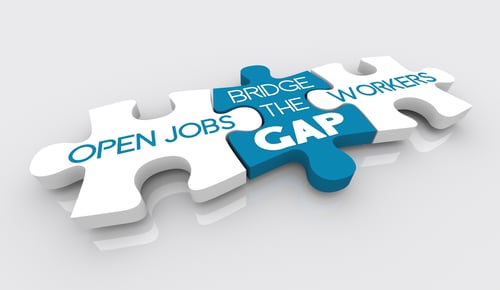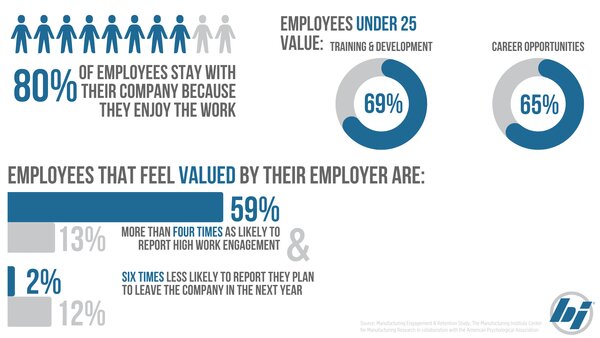Automation and Training
With faltering economic recovery, companies are scrambling to deal with continued supply shortages, increasing commodity prices and higher wages triggered by labor shortages. In 2021, the producer price index (PPI) rose 10% in the industrialized world. The PPI measures the postproduction prices of goods and is a barometer of the pressures on corporations. The last time there was this level of increase in PPI was in the first half of 2008. Enough said.
 Companies can combat rising inflation by increasing prices in line with PPI-- often a required strategy. However, that alone is not nearly enough. Additionally, taking steps to boost productivity by cutting costs can be a catch-22. Indicators suggest that those who cut costs to improve productivity during previous inflationary periods achieved higher gains. Despite this, it often results in layoffs and a higher unemployment rate. Consequently, people who aren't employed can't afford your product.
Companies can combat rising inflation by increasing prices in line with PPI-- often a required strategy. However, that alone is not nearly enough. Additionally, taking steps to boost productivity by cutting costs can be a catch-22. Indicators suggest that those who cut costs to improve productivity during previous inflationary periods achieved higher gains. Despite this, it often results in layoffs and a higher unemployment rate. Consequently, people who aren't employed can't afford your product.
There are many options for dealing with the current economic climate. It is better to be proactive than panic. Kevin Bacon said it famously at the end of the movie Animal House: “Remain calm, all is well!”
Backlogs Due to Supply Issues
Are your current suppliers unable to keep up with your product demands? Are you facing backorders and delayed lead times? Alleviate logistics issues, supply chain disruptions and eliminate stock out by identifying stable suppliers. Collaborate with your suppliers by sharing your forecasts to help them prepare for your needs.
Work with suppliers who can collaborate through digitization and automation via cross-platforms. Leveraging automation and analytics can help you optimize inventory for margins and identify stock imbalances to facilitate redistribution, monitor your inventory and identify products with the highest demand.
Investing in technology to automate and digitize your processes is one of the best methods to increase efficiency and manage supply chain shortfalls.
Labor Shortages
According to the U.S. Bureau of Labor Statistics, the unemployment rate in May 2022 was 3.6% for the third consecutive month and the number of unemployed persons was stagnant at 6.0 million. These numbers are still fairly consistent to February 2020 at 3.5% and 5.7 million, respectively. The question is — are thingsgetting worse? Or are we already there?
There are many things you can do to manage supply issues, or at least stem the tide. However, without the right staff members to manage your operations and the labor to manufacture and distribute your products effectively, you’ll be throwing good money after bad. Rather than replacing low-skilled employees, consider giving them the training they need to succeed, or up-skilling. The cost to replace an existing employee and train a new hire can run as high as 50 to 60% of their annual salary. Instead, focus on:
- Retaining existing employees by offering incentives and a positive working environment to reduce churn. Retrain and cross-train to help them expand their skills while increasing your talent pool for different job functions. You can also incentivize existing staff to refer potential employees.
- Training new employees to succeed. Don’t expect them to fall off the turnip truck and be 100% effective the first day. Make sure they are properly trained and motivated to do their jobs so you can retain them.

The Manufacturing Engagement & Retention Study found:- 80% of employees stay with their company because they enjoy the work
- Employees under 25 value training & development and career opportunities the most, at 69% and 65% respectively
- Employees that feel valued by their employer are:
- More than four times (59% vs. 13%) as likely to report high work engagement AND six times (2% vs 12%) less likely to report that they plan to leave the company in the next year
- Flexibility in your recruitment process. Consider hiring candidates who aren't able to meet your requirements at the time of hiring, but can develop into their job. It is more important to find motivated people who are willing to learn than to hire a highly skilled machinist who’s had four jobs over the last five years.
- Providing retraining to your managers in interpersonal communication and employee relations to build consensus and group accountability. Bad managers can cause the loss of a great employees.
Apprehension of Returning to Work
The primary uncertainty about the labor market and inflation is how the pandemic or post-pandemic environment will continue to impact businesses. If large portions of the public continue to have fears for their health that impede them from taking non-remote jobs, or other reservations in returning to the workforce, the labor market will continue to tighten. This is also true for highly skilled workers older than 55, who are reluctant to return to work when they are close to retirement. As a result, wages will see further growth, fueling high inflation.
It's also worth offering additional incentives such as hiring bonuses, flexible work schedules or work at home options, if it’s feasible for the job function.
Conclusion
Most companies have instituted price increases to combat rising inflation. While this is typical, it is not enough to sustain growth.
Investing in technology and focusing on your current workforce are two priorities to consider. Employees who are well-trained and motivated will improve efficiency and performance. Stability is also achieved through automation. Research shows that companies who invested in automation before the pandemic are weathering the storm better than others. Due to this, they have generated higher revenues and experienced fewer disruptions in their supply chain, workforce productivity and product demand. For example, a major healthcare company realized its return on investment from automating processes jumped from $2 million to more than $100 million within a year.
SMBs to Inc. 1000 companies are reaping significant benefits from working with suppliers to collaborate through digitization and automation for optimizing the correct balance of inventory, facilitating redistribution and identifying which items or products are in the highest demand. Additionally, focusing their attention on their existing workforce and the low hanging fruit of available hires will provide stability through what is coined the Great Reset or Great Resignation.
Don't replace employees who aren't as skilled, or marginally qualified. Instead, focus on training, or upskilling. Historically, training a new hire can run as much as 50 to 60% of their annual salary across all industries and levels of job functions. Conversely, training existing employees is reported to be less than 30% of that cost. The workforce landscape has permanently changed. It is now more important to provide extra training and cross-train your current workforce to encourage additional skill sets. You can also offer additional incentives to current and new employees with hiring bonuses, referral bonuses and flexible work schedules.
Sources Include:
